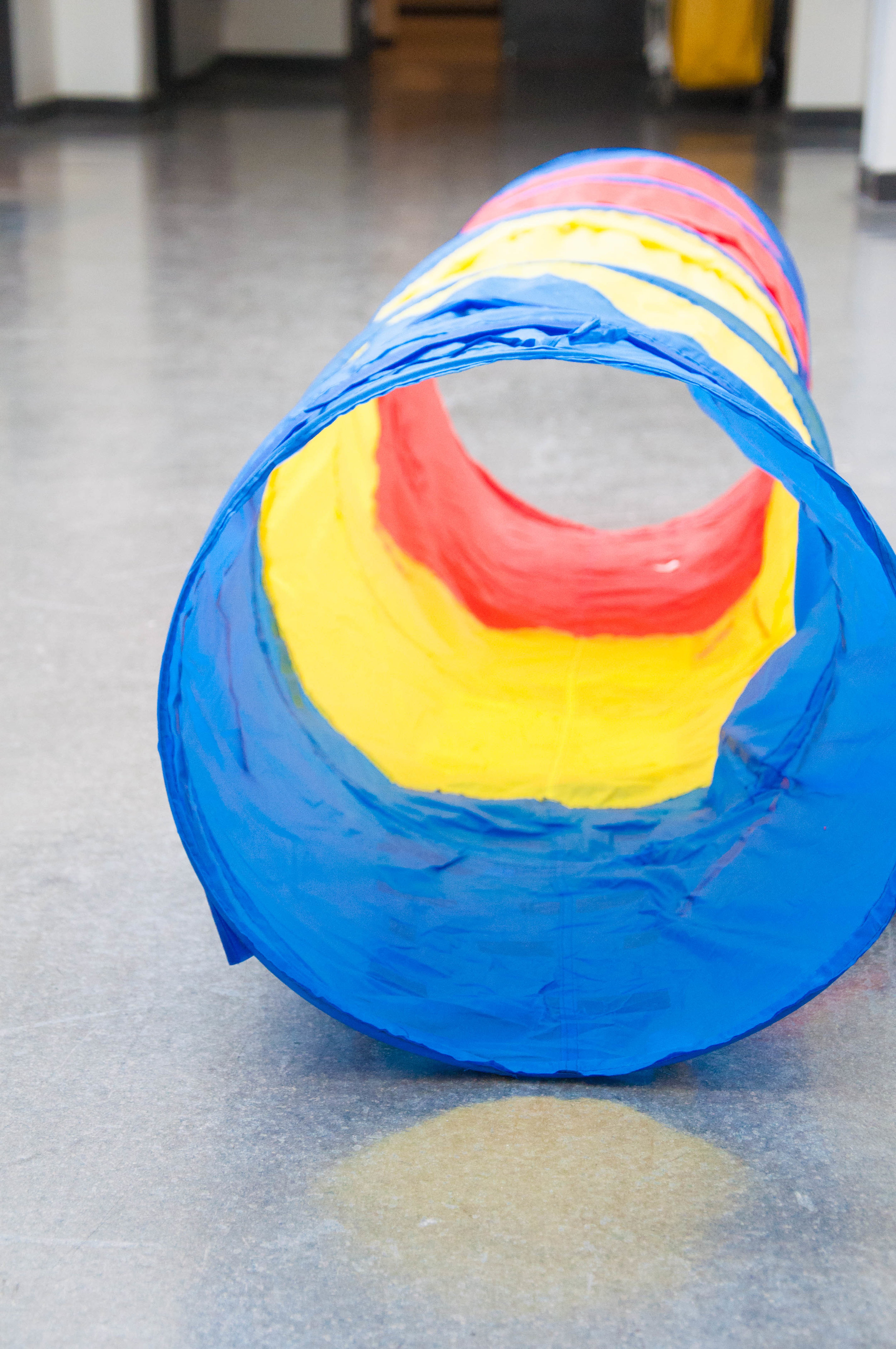How might we make indoor play more active and exploratory?
Krazy Tunnel was designed in 2.00B, MIT’s Toy Product Design class. Early on in the class, our team decided that we wanted to create a toy that was small enough to fit in a living room, yet still large enough to encourage kids to be active. We attempted to design a toy for children 18 months to 4 years old that would allow them to explore colors and sounds on their own, as these are the years that children begin to differentiate and identify colors. The concept we ultimately decided on was a colorful pop-up tunnel that lights up and plays musical notes as a child crawls through. Krazy tunnel is not only just fun to crawl through for kids, but it provides an exciting visual and auditory experience that can help stimulate cognitive development at a young age.
Our original concept art shown side by side with our final product. We originally envisioned a tunnel that lights up in rainbow colors, but our final product ended up having a musical sound experience as well as colorful lights (see video)
Our first iteration of prototyping was intended to test circuit functionality. We weren’t sure how we would create a large surface area sensor or switch that could turn the lights in the tunnel on and off. We utilized a Makey-Makey and aluminum foil glue to some foam to create large surface area contacts.
One of our teammates tests the circuit. The large strip of aluminum on the left is ground, and the discrete squares on the right are signal. When she places one hand in each region, her body completes the circuit and acts as a switch.
We learned from the makey-makey prototype that sound (in addition to light) is quite delightful, and decided to implement a sound component to our product as well. Kids who tested our prototype were excited at the piano sounds as well when we showed them how to use our prototype.
The second iteration prototype focused on testing the right shape and size of the tunnel. We bought several differently shaped tunnels and had children at the Boston Children’s Museum play with then tunnels. We found that kids older than 5 or 6 had some trouble squeezing through the narrow tunnels, but were still very excited to try. Most younger kids zipped in and out of the tunnel several times before getting distracted by some other toy. Babies who had just learned to crawl tended to sit in the tunnel for long periods of time and not crawl all the way through.
Here, one of the kids crawls through a combination of the tunnel shapes. Children aged 2-4 played with the tunnel the longest, and the younger children who played with the tunnel multiple times seemed to enjoy a fresh and novel experience each time they played with the tunnels again.
A demonstration of the final Krazy Tunnel prototype with a not-so-kid-sized toy tester.
Designed and built by Annie Zhang, Bret Stepanek, Elizabeth Vasquez, Nhat Nguyen, and Lexi Jones.
This curve represents the skills I practiced and strengthened through my work on this project.







